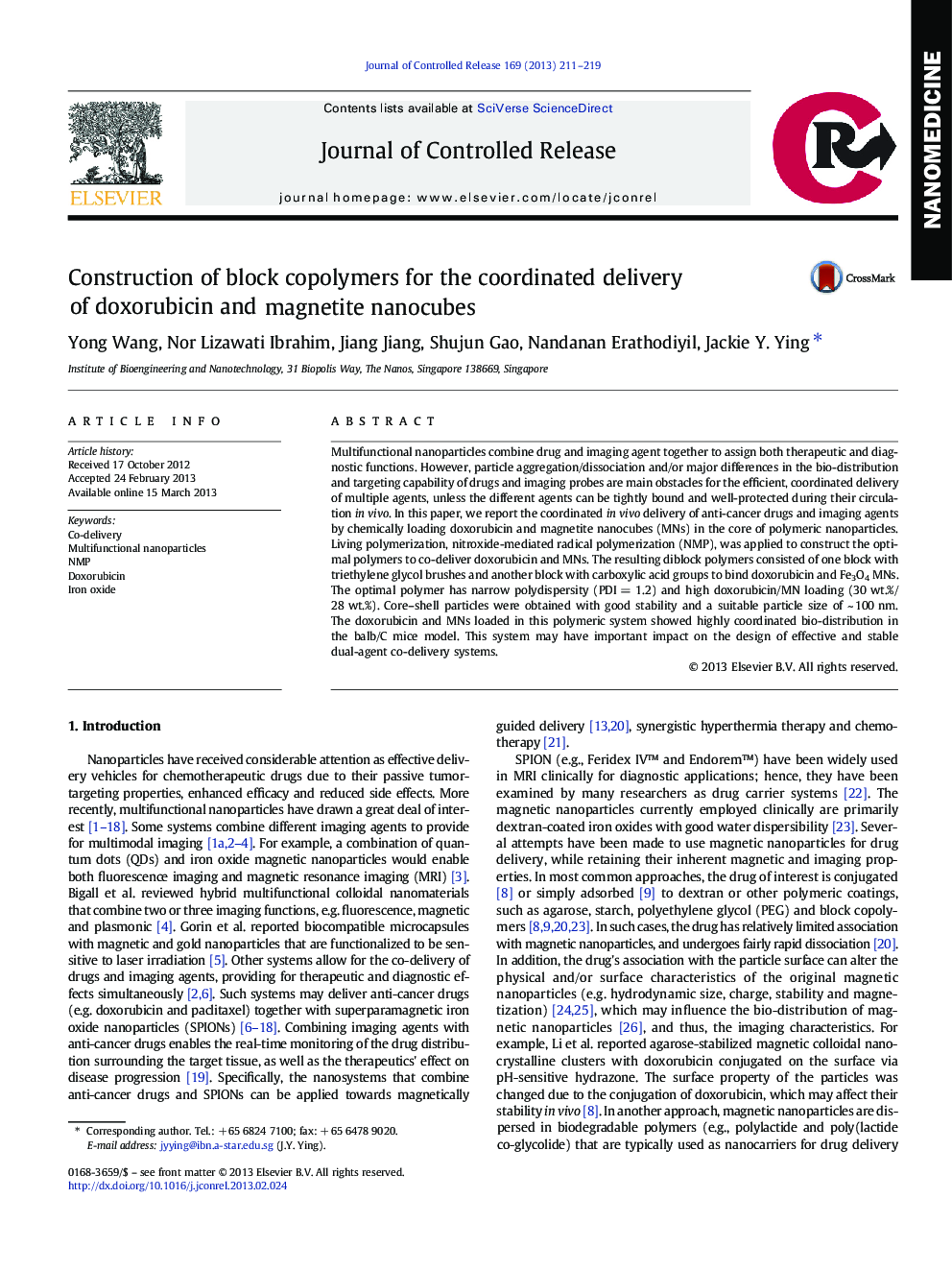| Article ID | Journal | Published Year | Pages | File Type |
|---|---|---|---|---|
| 1424159 | Journal of Controlled Release | 2013 | 9 Pages |
Multifunctional nanoparticles combine drug and imaging agent together to assign both therapeutic and diagnostic functions. However, particle aggregation/dissociation and/or major differences in the bio-distribution and targeting capability of drugs and imaging probes are main obstacles for the efficient, coordinated delivery of multiple agents, unless the different agents can be tightly bound and well-protected during their circulation in vivo. In this paper, we report the coordinated in vivo delivery of anti-cancer drugs and imaging agents by chemically loading doxorubicin and magnetite nanocubes (MNs) in the core of polymeric nanoparticles. Living polymerization, nitroxide-mediated radical polymerization (NMP), was applied to construct the optimal polymers to co-deliver doxorubicin and MNs. The resulting diblock polymers consisted of one block with triethylene glycol brushes and another block with carboxylic acid groups to bind doxorubicin and Fe3O4 MNs. The optimal polymer has narrow polydispersity (PDI = 1.2) and high doxorubicin/MN loading (30 wt.%/28 wt.%). Core–shell particles were obtained with good stability and a suitable particle size of ~ 100 nm. The doxorubicin and MNs loaded in this polymeric system showed highly coordinated bio-distribution in the balb/C mice model. This system may have important impact on the design of effective and stable dual-agent co-delivery systems.
Graphical abstractFigure optionsDownload full-size imageDownload high-quality image (312 K)Download as PowerPoint slide
